what did violet plan to do with the hammocks in the caravan
A Farm Cart And The Citroën 2CV
Legend has information technology that the germ of the idea that would become the Citroën 2CV was sown in the mind of the Vice-President and Primary of Applied science and Design of Citroën, Pierre-Jules Boulanger, 1 rainy afternoon when as he collection along a narrow French lane he found himself stuck behind a farmer'southward horse and cart which was moving at horse walking pace.
Boulanger could have merely become annoyed, which would have done no-one whatsoever good. But he didn't, instead he started thinking like a machine manufacturer, and asked himself the question "Why not offering French farmers a better mode of transport?"
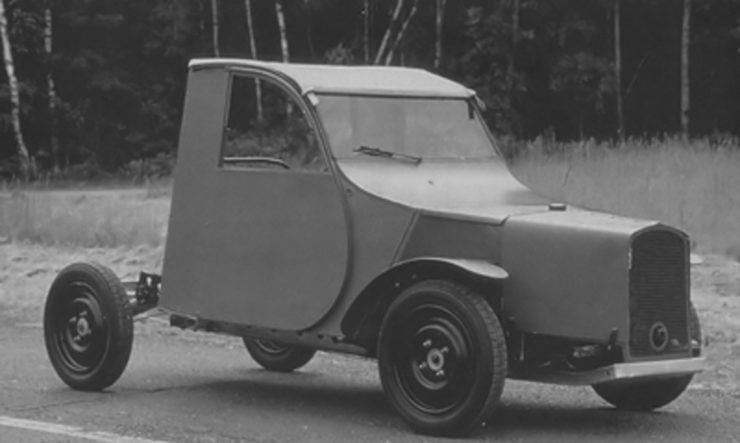
This was a sensible question, not only to make traffic move more quickly on French country roads, merely for the do good of the farmers. A equus caballus requires a significant amount of maintenance including feed and vet bills. But a auto could be built that was depression maintenance, easy to start, easy to drive, and a whole lot faster than a equus caballus at walking stride.
In his mind Boulanger decided to go the boffins at Citroën working on the pattern of only such a vehicle. Information technology didn't need to be fancy, but it did need to be cheap: and it had to do the things farmers needed to practise reliably day after day, year afterward year.
The Citroën 2CV Pattern is Formulated + Prototypes Built
Boulanger saturday downwardly with a precipitous pencil and clean sheet of paper and began thinking through the concept for the new car. That thinking did not brainstorm with a car design simply instead was based on Boulanger's thoughts on what a farmer would need a vehicle to do.
In this sense his pattern assay was somewhat different to that used by Dr. Ferdinand Porsche when he created the Volkswagen Protrude. Porsche's design began with concepts for a motorcar and those ideas were steered by none less than Adolf Hitler, who had very definite ideas of what the auto for his people should exist. Boulanger on the other manus was gratuitous to do his task assay unencumbered.
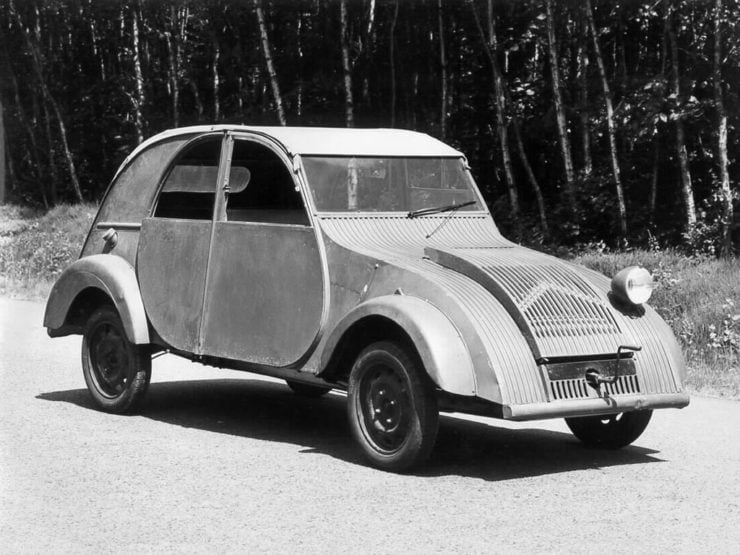
Boulanger did not come up with a pencil sketch of the new car, instead he came up with a listing of requirements for information technology. This gear up of requirements included that the car had to be able to transport up to 4 passengers, information technology needed to be able to cross a freshly plowed field with a handbasket of eggs on the back seat without any of the eggs getting broken, that the machine should be able to comfortably exist driven on the worst of French potholed muddy roads, and that it should have the load carrying capacity to take a 50kg sack of produce or a full cask of vino to take to market.
Additionally Boulanger specified that the car have fuel consumption of not less than 3 liters per 100 kilometers, which is eighty miles to the Usa gallon or 95 miles to the British Purple gallon, accept a peak speed of 60 km/hr, and be like shooting fish in a barrel for women to start and drive. He also decided that the machine should require minimal maintenance and that any servicing work or repairs must be kept inexpensive and affordable: it had to be cheaper to run than a equus caballus.
These were the specifications that Pierre-Jules Boulanger gave to his pattern squad in 1936 and some of them probably idea he was just a trifle mad when he referred to it as "an umbrella on wheels", simply he was the boss, and what the boss wanted was what the boss was going to get.
The blueprint team charged with creating this quite unique vehicle included André Lefebvre as the master engineer and Italian stylist Flaminio Bertoni. They referred to the car as the TPV which stood for "Toute Petite Voiture" (English language "very pocket-sized auto").
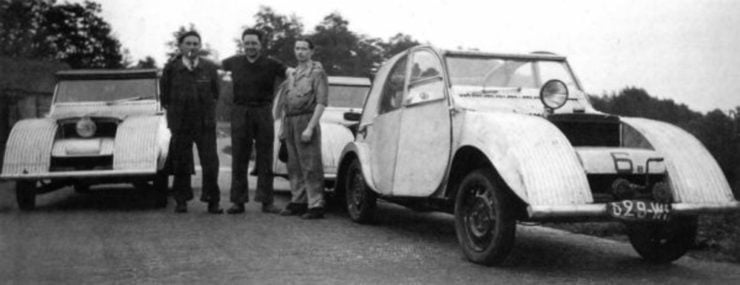
The piece of work on the car design proceeded in absolute secrecy. The blueprint squad initially used a single cylinder motorcycle engine and bodywork made of aluminum, with magnesium being used in some parts. During the 1930s it was thought that aluminum production was to get much cheaper so it was expected to exist a durable and inexpensive material to use in car production.
Similarly the downsides of using magnesium, particularly its propensity to burn rather well, were non yet well understood. The chassis was to exist a elementary ladder frame while various systems were tried in the search for a suitable interruption arrangement.
The well-nigh complex of these was created by Alphonse Forceau and it consisted of a leading arm front pause and a trailing arm rear, the whole sprung by a system of eight torsion bars located beneath the rear seat. These torsion bars comprised one for the front suspension which was connected past cablevision, one for the rear, an intermediate bar for each side, an an overload bar for each side.
The rationale behind this complex system was that the overload bars would become active when the machine was loaded with three or more people or cargo. This suspension would not exist carried through to the post-war production cars.
The then bankrupt Citroën company had been taken over in 1934 by the Michelin tire company and Pierre Michelin became president of Citroën at that time. Michelin became involved in the design and creation of the Citroën TPV and as his tire company were working on a new concept for rider motorcar tires, the radial tire, he wanted that more than advanced tire technology to exist used in the TPV. Michelin created their starting time radial tires in a special size specifically for the needs of the TPV and then tires and suspension were jointly created to compliment each other.
A feature that was not carried forward to production was the use of hammock type seats which were suspended from the roof. These moved around with vehicle motion and proved to exist well-nigh unsatisfactory then they were replaced with conventional steel tube frame seats.
Boulanger was determined to be highly involved in the TPV projection and he created a department whose chore it was to counterbalance each and every component and to try to find means to make each ane lighter. The projection was top surreptitious, Boulanger did non want rival machine makers Renault or Peugeot to get wind of information technology or to outset working on their ain versions.
Pierre Michelin was killed in a car crash in December of 1937 and then Pierre-Jules Boulanger became Citroën's President. By this time 47 prototypes had been built and tested and the TPV design finalized. A pre-production run of 250 cars was undertaken and completed by the center of 1939. These cars had only i headlight and one taillight because that was all French law required. The plan was to debut the motorcar to the public at the Paris Motor Show to be held in October 1939. Publicity materials were prepared and the car was re-named the Citroën 2CV ready for its launch.
It was at this signal that ane of the virtually significant events of earth history took place. Adolf Hitler ordered his armed forces to invade Poland on September 1st, 1939 resulting in both France and Uk declaring war on Nazi Germany on September 3rd, 1939. France took military activeness against Germany on September 7th, 1939 and moved troops with armored support into the Saar and up to the Siegfried Line. This was to exist short lived however and on September 17th the French withdrew, heralding in the period known as the "Phoney War" which the French referred to every bit the "Drôle de guerre" (Joke of a war).
This was a state of affairs in which the French knew they were facing a menace so dangerous that the futurity of their nation was at stake. Suffice to say that the planned Oct 1939 Paris Motor Show was cancelled every bit France began preparations for what would become the fight for her life.
Hiding the 2CV From The Nazis
Past May of 1940 the German language Army had brought the British Expeditionary Force to Dunkirk from where 330,000 British troops were able to be evacuated. By July of that year the Germans has succeeded in occupying the northern part of French republic, including Paris, and Pierre-Jules Boulanger had to brand some major decisions most how his company would bargain with the new Nazi German occupiers.
One of his first decisions was to hide every trace of the Citroën 2CV so the Nazis could not steal and gain advantage from the technology. The prototypes and pre-production cars were either destroyed, buried, or subconscious. The plans and machinery to build the cars were requisitioned past the Nazis who packed them into railway wagons set up to steal them abroad to Germany. However, help of the French Resistance these machines were re-labeled and sent off to diverse locations in France where they were hidden, hidden so effectively that Boulanger was not sure he would exist able to recover them once the pesky Nazis were expelled from his country, as he earnestly hoped they would be.
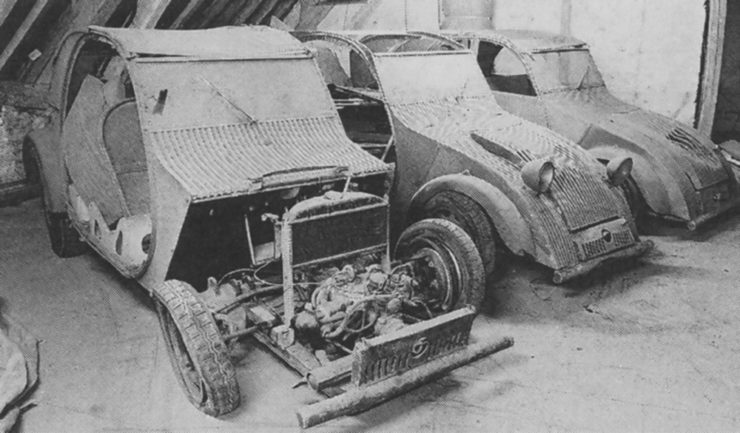
Pierre-Jules Boulanger was so resistant to the Nazis that they labelled him an "Enemy of the Reich", a title that he no doubt thought perfectly advisable, but which put his life in danger. He and his countrymen endured four years of Nazi occupation until the D-Day landings in mid 1944 and the eventual defeat of the Nazis on May eighth, 1945.
With the war behind them France began the procedure of recovering from its ravages, and a new Citroën 2CV was to be a vital component in that recovery.
The Perfect Car for Post-State of war Europe
With the ending of the occupation of France in 1944 the French people elected a socialist government, every bit did the British people. The result of this for the French auto manufacture was authorities restrictions on what they could or could not do. The new French authorities nationalized car maker Renault and put policy for auto making into the hands of a former car industry executive Paul-Marie Pons whose program for the French machine industry was chosen the "Pons Program".
Under this plan the only visitor permitted to make cars for the lower priced end of the market was to be Renault. Renault had been working on their new Renault 4CV model, which was in many respects similar in concept to Dr. Porsche'due south Volkswagen and thus subject to the same limitations, and amidst the post-war political wrangling Dr. Porsche was forced to be involved with Renault for a time.
So while the political machinations went on Citroën were forced to shelve their 2CV and only produce their Traction Avant. Boulanger and his squad were not idle still simply had spent the war years and post-war years working on improvements to their pre-war pattern. The multi torsion bar suspension was gone, the water cooled two cylinder horizontally opposed engine was replaced with a 375cc air cooled one designed by Walter Becchia who was also charged with designing a new gearbox to go with his new engine.
Becchia created a new 4 speed gearbox and told Boulanger that the fourth gear would human action as an overdrive to assist with getting the required fuel economy. The bodywork was re-modeled because aluminum had become expensive and then the auto was now to exist fabricated of steel.
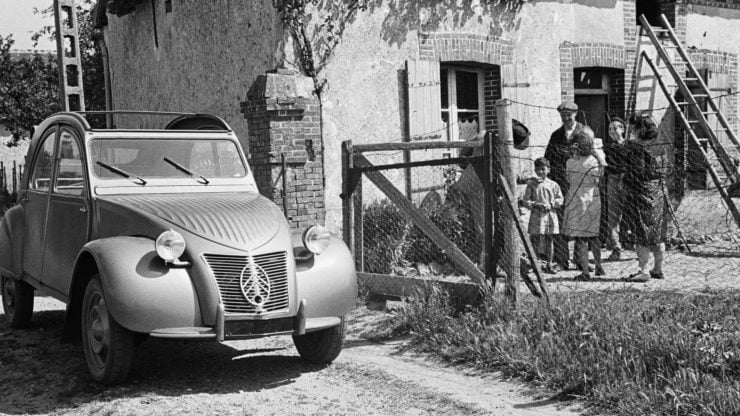
The Pons Plan was to terminate past 1949 and Citroën lost no time in getting the newly designed 2CV into the public gaze for the kickoff time. The 2CV made her debut at the Paris Motor Prove of October 7th, 1949: x years after the planned debut of the pre-war TPV based 2CV.
The 2CV was an instant hit, despite the motoring press generally treating information technology with disdain. Ane American announcer had the temerity to ask if it came with a can opener? A motoring writer from United kingdom'due south prestigious "Autocar" magazine said of information technology that information technology was "… the work of a designer who has kissed the lash of austerity with almost masochistic fervour." France had been under Nazi occupation, an experience that America and Britain had been spared.
While segments of the motoring press were somewhat less than enthusiastic the French motorcar buying public were ecstatic well-nigh the new "deux chevaux" and the orders literally flooded in at the motor show and continued unabated from there on. In fact the orders flooded in such that a waiting list had to be established and certain buyers had to be given priority over others.
Those in prioritized professions included doctors and midwives, veterinary surgeons, parish priests, and farmers. Inside months the wait for a new 2CV was 3 years, and it progressively increased to 5 years with the result that second-hand 2CV started to sell for higher prices than new ones considering you could have your second-hand 2CV direct abroad.
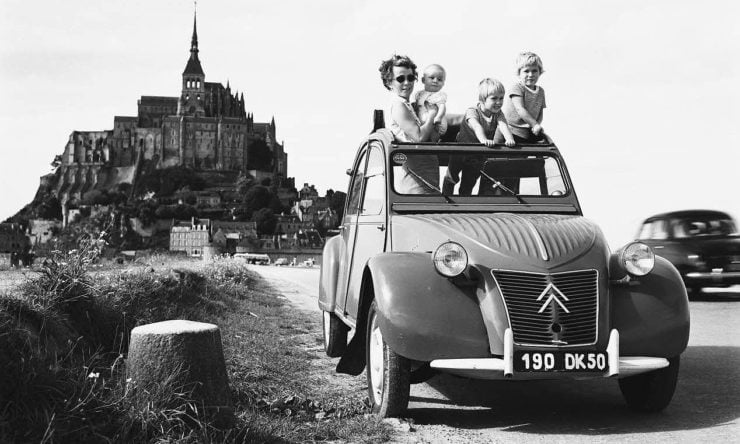
But fifty-fifty as his little 2CV was going from success to success Pierre Boulanger was killed in a car crash on Sunday Nov 12th, 1950, at Broût-Vernet, Allier, on the master road from Michelin's home base of operations at Clermont-Ferrand on his style to Paris: he was driving a Citroën Traction Avant. Just the 2CV would proceed to get a lasting legacy of his vision for a car that would deliver to the ordinary French people the essence of liberté, égalité, fraternité.
Citroën 2CV – Specifications
The first 1949 version of the Citroën 2CV was the 2CV Blazon A. This car was fitted with a horizontally opposed two cylinder 375cc 9hp engine which was started past a pull-cord much like we start a typical lawn mower. The pull-string starter was changed to an electrical starter for production cars, that decision being made the day later the Paris Motor Show and virtually likely equally a result of public reaction.
The bodywork had been completely revised and was all steel fitted onto a tubular steel frame mounted on a ladder type platform chassis. The suspension was completely new. The front nonetheless had leading arms and the rear trailing arms, merely these were not sprung by a complex torsion bar system merely instead used longitudinally mounted roll springs fitted into 2 cylinders mounted one each side of the mid-chassis: one spring for each cycle.
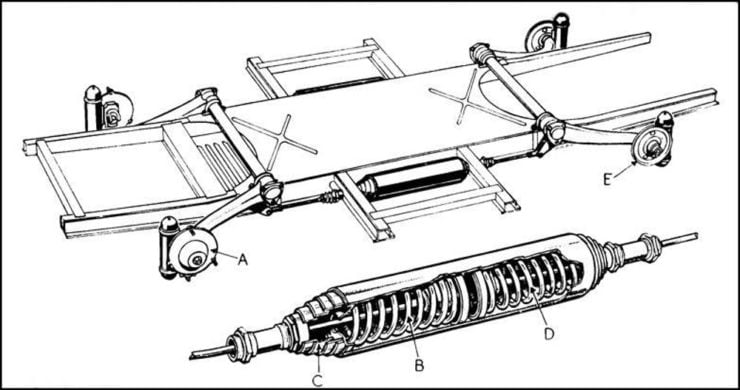
The mode these springs work was quite ingenious. Each spring was connected to its respective interruption arm via an eccentric creepo and so that when the interruption arm is pushed upward the connecting rod pulls on the retainer that is mounted on its end, thus compressing that cycle'southward spring. In addition to this action within the cylinders the cylinders themselves were provided with a caste of springing so that the cylinder was immune for and aft movement between the chassis members it was mounted to. The idea backside this was to provide a leveling effect by interrelating the actions of front and rear springs dampened by shock absorbers for each wheel.
This forepart leading arm and rear abaft arm suspension system also provided a degree of torso roll resistance despite its being very soft. Vehicle scroll in cornering would tend to crusade the rails on the outside of the corner to increase as the load compressed the suspension on that side, while the interruption on the within of the corner would tend to reduce the track on that side as the artillery moved downwards and inward because the body was lifting on that side.
The resulting 2CV interruption was soft but able to provide good roll resistance, with long pause travel to enable the car to traverse rough roads and tracks while keeping all the tires in contact with the road, and while keeping the automobile's occupants comfortable, even if those occupants were a basket of eggs on their way to market.
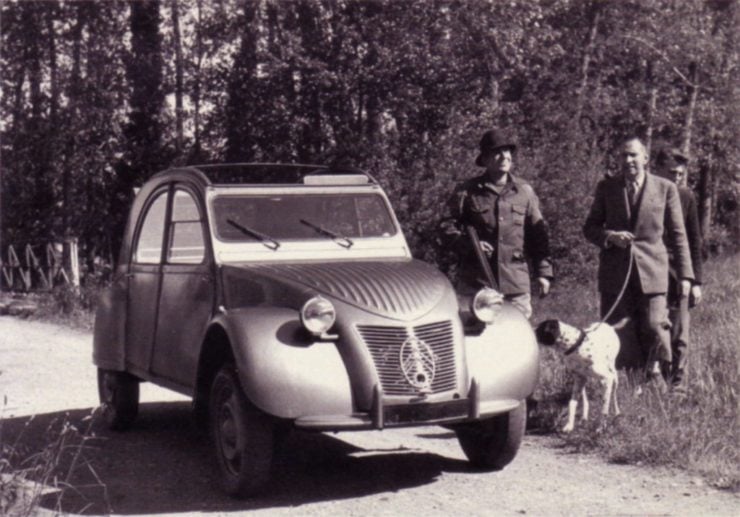
The start engine fitted to the 2CV was the 375cc 9hp OHV horizontally opposed "boxer" twin whose power was so small-scale that drivers spent a lot of time with the "pedal to the metallic" trying to brand the car "gain momentum". In 1958 a 425cc was made available and that model known equally the 2CV AZ (or 2CV 4). And so in 1968 a 602cc engine was also offered giving 28hp @ vii,000rpm, a quadrupling of power. Fitted with this engine the car was named the 2CV 6. That aforementioned twelvemonth the 425cc engine was replaced by a 435cc engine.
1970 saw the power of the 602cc engine increased to 33bhp in the M28 version, but after 9 years, in 1979, that engine was changed then it produced 29bhp @ v,750rpm. This was done to improve the engine's efficiency and it likewise gave the car a slightly higher top speed and improved fuel consumption.
In order to maximize simplicity and reliablity these engines used a "wasted spark" ignition system, this being washed to eliminate the need for a distributor for a twin cylinder engine. The ignition sends spark to both spark plugs at the same time, so one sparks on its compression and power stroke, and the other on its exhaust stroke, which is "wasted" but which doesn't cause any disadvantage.
Performance of the 2CV was acceptable for its intended use. The 9hp version could exercise standing to its 40mph superlative speed in 42.4 seconds, performance that helped the automobile gain the nickname the "Tin Snail". Top speed progressively increased as the engine size and power as well increased with the 2CV beingness able to do 50mph (80km/hr) by 1955 and 52mph (84km/hour) by 1962, making information technology able to do the same speed as a British Land Rover.
By 1970 the 33bhp 602cc engine was able to push the 2CV upwardly to 62mph (100 km/hr) making it a tad faster than a 4 cylinder Land Rover, and past 1981 the new 28bhp version of the 602cc engine gave it the ability to get all the mode up to 71mph (114 km/hr) then at last the 2CV driver was able to go booked for speeding in countries such as Commonwealth of australia which had imposed either 100km/hr or 110km/hour blanket speed limits on state roads.
And so to expect at the operation of the 2CV it was pretty proficient protection against speeding fines and loss of license in many parts of the world.
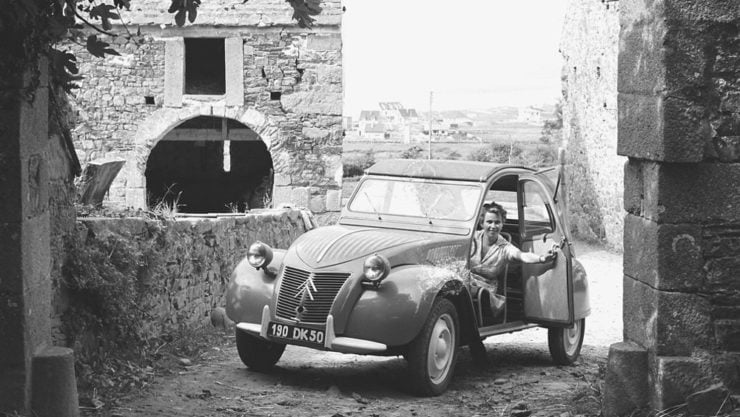
The gearbox was 4 speed and the engine and transmission mounted as a unit in the forepart of the vehicle driving the front wheels. The exception to this was the 2CV "Sahara" which had engines and transmissions both in the front and in the back giving it 4-bike-drive capability. Command of the gearbox was via a gear-lever that came out of the dashboard and which had an unusual but practical shift blueprint.
In the left-most position first and contrary were opposite each other (left and back for outset), in the center position second and third opposite each other, and quaternary gear could only be engaged once in 3rd gear, by turning the gear-lever to the right. Why would they do this? The 2CV was designed to be used off road and on dingy tracks, situations in which the machine could become bogged. One of the ways of getting a car out of a pasty state of affairs is to move it backwards and forwards progressively building upwardly momentum until its possible to drive out of the boggy situation.
Every bit for interior fittings the automobile was kept as spartan as possible and was fitted with only one windscreen wiper which was driven by a speed shaft bulldoze. This no doubt seemed quite logical every bit the faster the motorcar went the faster the wiper went. The roof was a waterproofed sail cover that could exist rolled back all the way to the rear of the car. The speedometer was attached to the windscreen colonnade, while to check the fuel level a dipstick was provided in the tank. All of this was washed to make the car as reliable as humanly possible, and as easy to repair as possible. The less things fitted the less chance of something breaking or going incorrect.
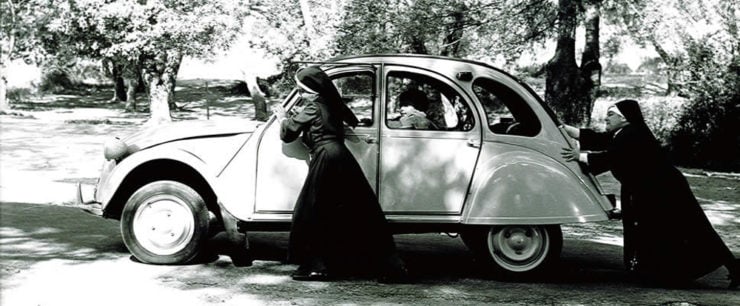
The Van and Utility Versions of the Citroën 2CV
Having been purpose designed as a utilitarian vehicle it was natural that Citroën would make both "Fourgonette" panel van and pickup/utility versions. The 2CV AU Fourgonette first appeared in 1951, quite quickly afterwards the standard sedan model.
The vehicle was fitted with the 375cc 9hp engine just like the sedan, Citroën's management having decided non to fit the newer and more powerful 425cc engine in it, reputedly considering they did not want owners of sedans to install that engine for increased performance. The use of the small engine required a more than low geared final bulldoze which allowed the diminutive Fourgonette to carry an impressive 250kg (500lb) load but its top speed was downwardly to 37mph (60km/hour).
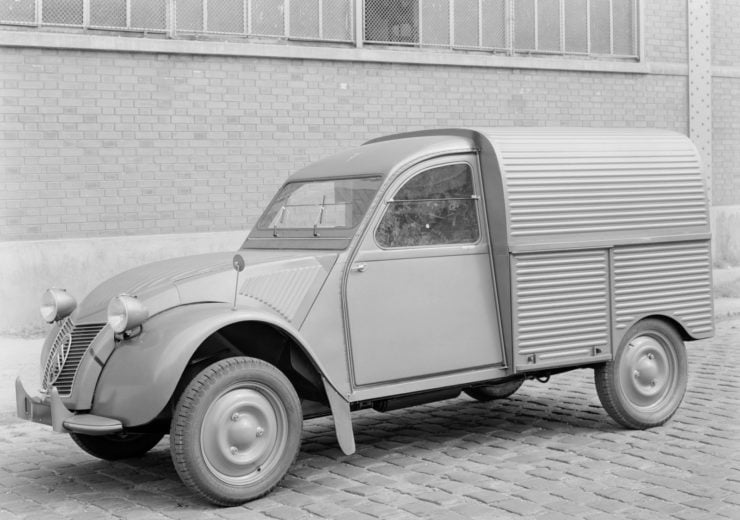
In 1955 Citroën decided that the Fourgonette really needed a more powerful engine and so the 425cc was fitted and the new model designated the 2CV AZU.
Citroën likewise made a "Weekend" version of the Fourgonette which was fitted with windows in the rear van section and folding seats. This made the vehicle very adaptable, existence able to bear cargo, or a work squad and their equipment, and the vehicle could exist used for recreational transport on the weekends.
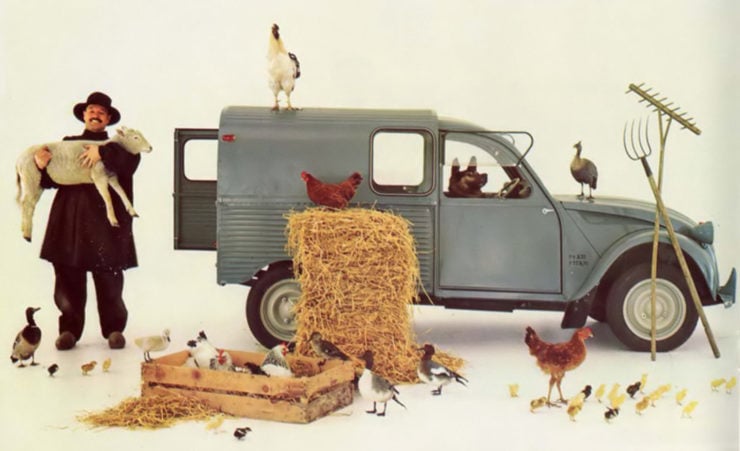
At that place were also pickup/utility versions made and these were often purchased by military forces to provide low-cal and durable ship in much the same part equally the Willys Jeep. Equally military vehicles these 2CV pickups could exist found with medium to heavy weapons installed such as machine guns, just as Jeeps were.
A Family of Descendants
The 2CV was such a needed concept, and such a cleverly designed solution to the specifications originally coined by Pierre-Jules Boulanger, that it survived in production through to 1990 and too spawned a number of model variations.
Most of these variations were created by Citroën themselves only one that is worth a mention was created by an independent builder who wanted to build a car purpose designed for Africa. Although information technology never reached full production the "Africar" used a similar front leading arm and rear trailing arm break system, and it was fitted with a Citroën engine and manual. The early prototypes made for a Channel 4 documentary in which a convoy of these "Africars" made their mode from the Arctic Circle to the Equator in Africa were made from resin impregnated marine plywood.
You can read the story nearly this project, if yous click here.
The 2CV AZ, 2CV AZL, and 2CV AZLP
The 2CV AZ was introduced in 1954 and was fitted with the more powerful 425cc OHV twin cylinder "boxer" engine. Despite the fact that the 2CV had been designed to be just almost as utilitarian every bit possible a 2CV AZL version was created, the "L" continuing for "luxury". This was of form not to be dislocated with the give-and-take "luxury" as understood by a Rolls-Royce buyer however.
"Luxury" in the world of the 2CV meant that the car came with a demister, but only for the driver'due south side, the rear window was made larger, the seats were covered in plasticized cotton cloth, and to impress the people who saw the machine information technology also had chrome detailing strips.
In 1958 the "luxury" model gained a steel lockable boot and was given the model designation 2CV AZLP. The older style model that did not have the lockable kicking remained on sale up until 1967 past which time the vast majority of buyers were opting for the lockable boot model.
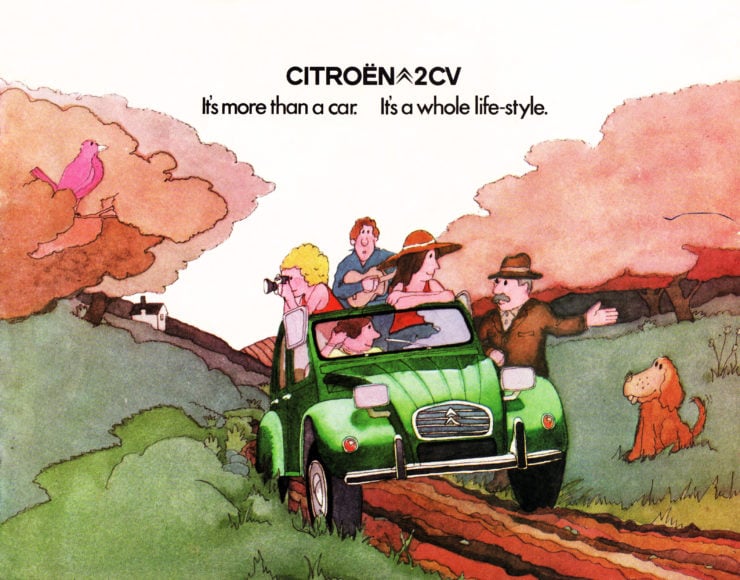
The 2CV "Sahara"
The Citroën 2CV 4×iv "Sahara" was arguably the nearly interesting and most desirable of all the 2CV variants, despite the fact that information technology had to lose the lockable boot. The 2CV "Sahara" was fitted with two 425cc 12hp engines, one at the front and one at the back, complete with 2 gearboxes and differentials, and ii fuel tanks. These engines could be used together or separately giving the vehicle an boosted level of dependability. If you tin can imagine being in Africa and having an engine breakdown, and and so finding you had a hungry leopard circling your car waiting for yous to become out, then you catch a glimpse every bit to why this was such an ideal vehicle.
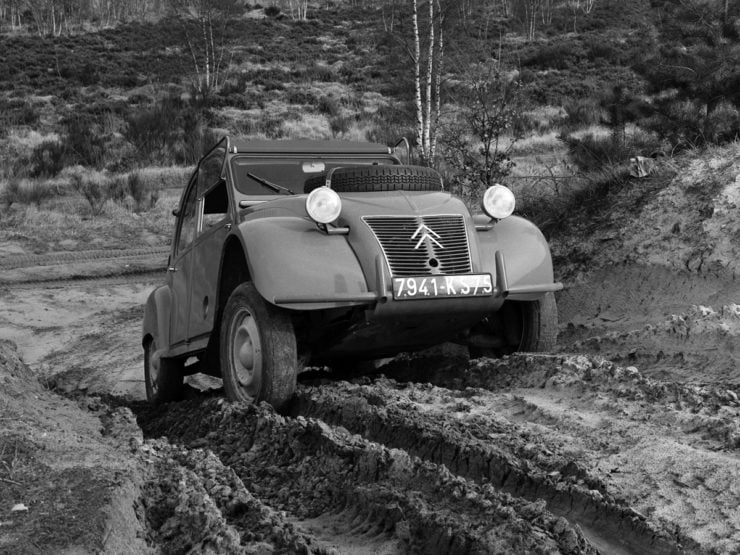
The 2CV Sahara was made in two series, the 2CV 4×four AW from 1958-1963, and the 2CV 4×4 AW/AT from 1963-1966. Top speed was 62mph (100km/hr) and they have the spare wheel mounted in a recess on the bonnet/hood like a Country Rover, this being necessitated because the spare cycle was normally located in the rear of the standard 2CV only when you install an engine in the boot the spare tire has to become somewhere else.
The 2CV 4×4 Sahara was much more than expensive than its single engine siblings and in full simply 694 were built and sold. Given the hard lives these vehicles accept had, and the remote parts of the globe that they were ofttimes shipped to, very few take survived: but 27 genuine examples are known to currently be.
The 2CV AZAM
The 2CV AZAM was introduced in 1963 and was another great jump in providing "luxury" for 2CV buyers. This actually was a car in which to enjoy a decent Cuban cigar while your passengers cracked open a canteen of Louis Roederer Cristal ensconced in the comfort of the fully upholstered velour interior, there was even an interior light and a dominicus visor for the passenger so they would not need their fashionable Ray Bans quite so much. This car was replete with stainless steel hubcaps, special door handles, and tubular chrome bumper over-riders with other chrome trim.
In 1965 the torso styling was changed to include a glass rear window and rear quarter windows, giving the automobile a light and spacious feel despite the fact that the dimensions had not actually changed.
The 2CV6 and 2CV4
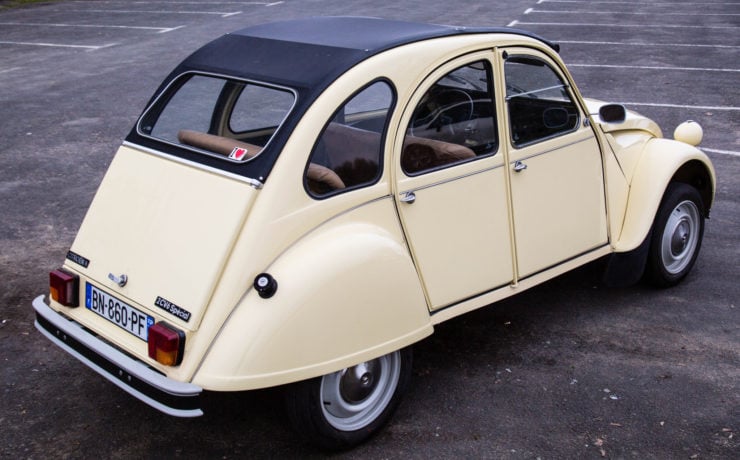
1967 saw Citroën install the 602cc boxer twin OHV engine in the 2CV creating the 2CV6. The 435cc 2CV remained in product and was designated the 2CV4. Despite this the 2CV sales were falling and Citroën were because ending production when in 1973 and 1974 the Globe Oil Crisis hit and suddenly as the cost of fuel went up so did interest in the economical 2CV, now made much more luxurious and so much less a automobile created by someone "who had kissed the lash of austerity…". In fact the 2CV had by this stage acquired a "coolness" cistron and had become a French fashion icon.
1975 saw Citroën go dorsum to basics with the 2CV and they released the 2CV Special, which was a return to the car'southward original austere roots.
The "Raid" Rallies of the 1970s
By 1970 the Citroën 2CV had matured in its pattern, performance, and features. Seeing this Citroën's management embarked on a strategy that was bold and imaginative, and they instigated a serial of Citroën "Raid" intercontinental endurance rallies. Customers were offered a 2CV fitted with a "P.O." kit, the "P.O." standing for "Pays d'Outre-mer" which translates as an "overseas kit".
The 2CV equipped with the "P.O." kit were built for international endurance competition over crude roads and tracks, a passport to adventure in exotic places. This was to testify to exist popular amongst young people, sufficiently and so that three of these Citroën "Raid" rallies were held; the first was the 1970 Paris to Kabul, Transitional islamic state of afghanistan and back once more, a altitude of sixteen,500 kilometers, which attracted no less than 1,300 participants; the second was the 1971 Paris to Persepolis in Islamic republic of iran and back again, a journey of thirteen,500 kilometers, in which 500 competitors took part; the third was the 1973 Raid Afrique from Abidjan to Tunis which required crossing the Sahara including the unmapped Ténéré desert which was normally closed to cars.
The 1974 "Oil Crisis" seems to have spelled the end for the Citroën Raid rallies just the "Oil Crunch" led to an upsurge of sales of the 2CV, its "street cred" having had a great boost from the car proving itself in the Raid rallies.
The 2CV "James Bond" and Other Special Editions
Having attained the condition of a "cool" car, almost a "cult" car, the 2CV was manufactured in a number of special editions complete with special pigment schemes and fittings. 1 of the most famous of these was the model made to commemorate the appearance of James Bond 007 driving a apprehensive Citroën 2CV. The Bond auto notwithstanding was not exactly standard in its fittings and although it lacked the built-in machine guns and passenger ejector seat of Bond'southward Aston Martin DB5 it did accept a much bigger engine in the form of a 1,015cc horizontally opposed four cylinder as used in the Citroën GS.
The production 2CV 007 special edition did not have the Citroën GS four cylinder engine but instead has the rather more tame 602cc boxer twin. To make the model a little more than exciting owners were presented with false bullet hole stickers so they could make their auto look more dramatic than it actually was.
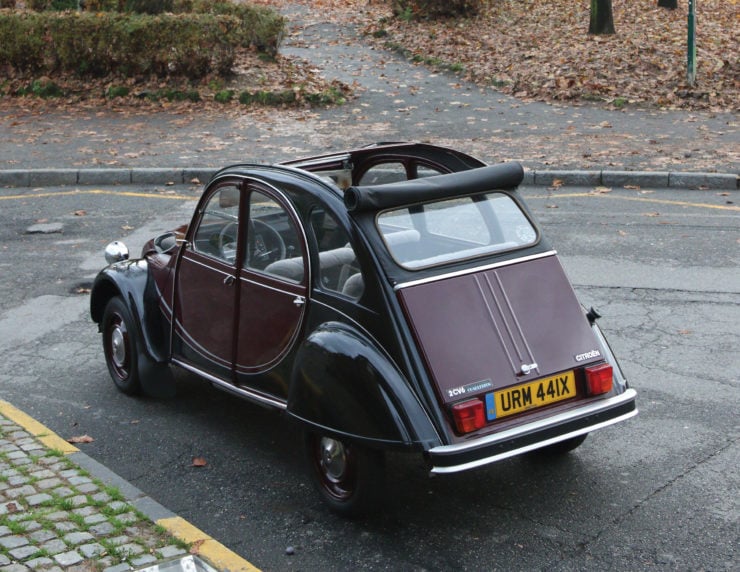
The most successful of the special editions was the Charleston which came with its characteristic two tone paint scheme. This model combined some desirable ingredients, it was economical and reliable, and it was stylish and comfortable. Information technology proved to be then popular that Citroën made it a regular production model. This model was fitted with inboard disc brakes for the forepart wheels making it one of the about desirable of all the 2CV variants.
Other special editions included the "Dolly", the Mehari, and the "Beachcomber".
The Stop of Production – Just Non the Stop of the Story
The Citroën 2CV remained in production for 42 years and was made in a number of countries including Britain, Portugal, Chile, and Argentine republic every bit well as in French republic. The machine went from existence viewed as the ultimate in austerity to becoming a desirable French icon.
Information technology became the inspiration for others, notably the British "Africar". Nowadays Citroën 2CV that have survived have become collector's items and are much loved past their owners. They are a automobile that was created in an era when people understood what was important in life, because they had lived through the Great Depression and the Second World War in which their nation had been invaded by the Nazis.
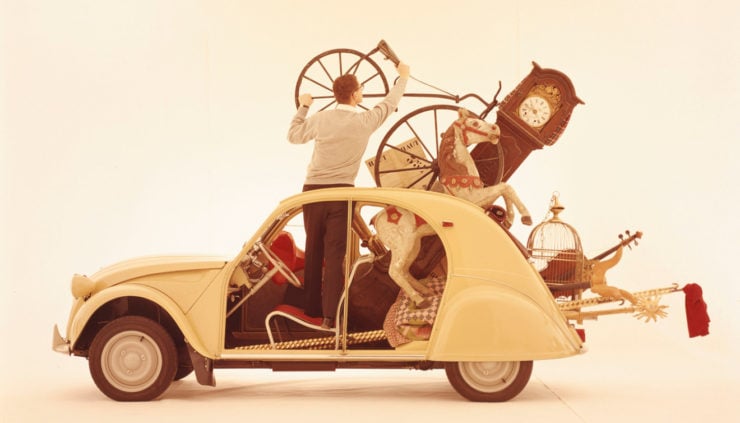
The 2CV in its afterwards iterations nonetheless represents the features that people actually need in a car; inexpensive to buy, easy and inexpensive to set up and maintain, decently comfortable, and very adaptable in terms of where it tin go and what it can deport. It is a concept that really should exist rediscovered although I suspect that information technology will not, only because the mod generations have not lived through the deprivations of their grandparents and then tend to be unable to understand the things that brand the Citroën 2CV great. Perhaps that will change, and if it does hopefully information technology won't necessitate the world again experiencing the keen traumas of the twentieth century that gear up the stage for the 2CV to be created.
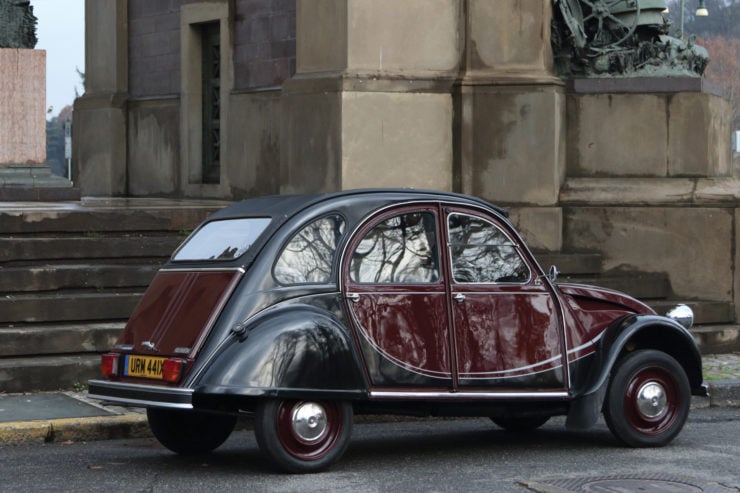
Picture Credits: Citroën, RM Sotheby's, Guido Bissattini @ RM Sotheby'southward

Jon Branch has written countless official auto Buying Guides for eBay Motors over the years, he's also written for Hagerty, he's a long time contributor to Silodrome and the official SSAA Magazine, and he'due south the founder and senior editor of Revivaler.
Jon has done radio, television, magazine, and paper interviews on various issues, and has traveled extensively, having lived in Great britain, Australia, Red china, and Hong Kong. The fastest thing he's always driven was a Bolwell Nagari, the slowest was a Caterpillar D9, and the most challenging was a 1950's Homo semi-trailer with unexpected brake failure.
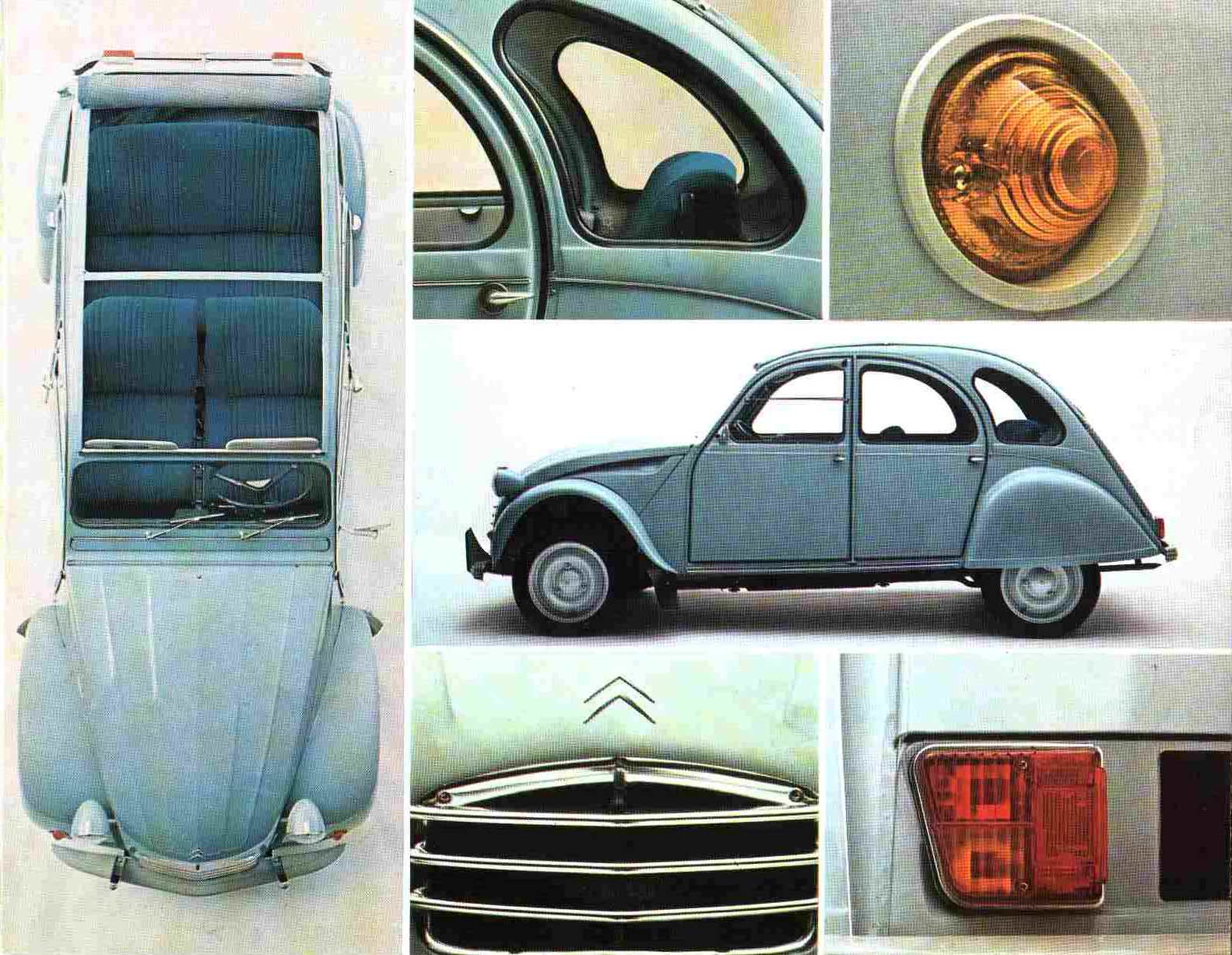
Source: https://silodrome.com/citroen-2cv-history/
0 Response to "what did violet plan to do with the hammocks in the caravan"
Post a Comment